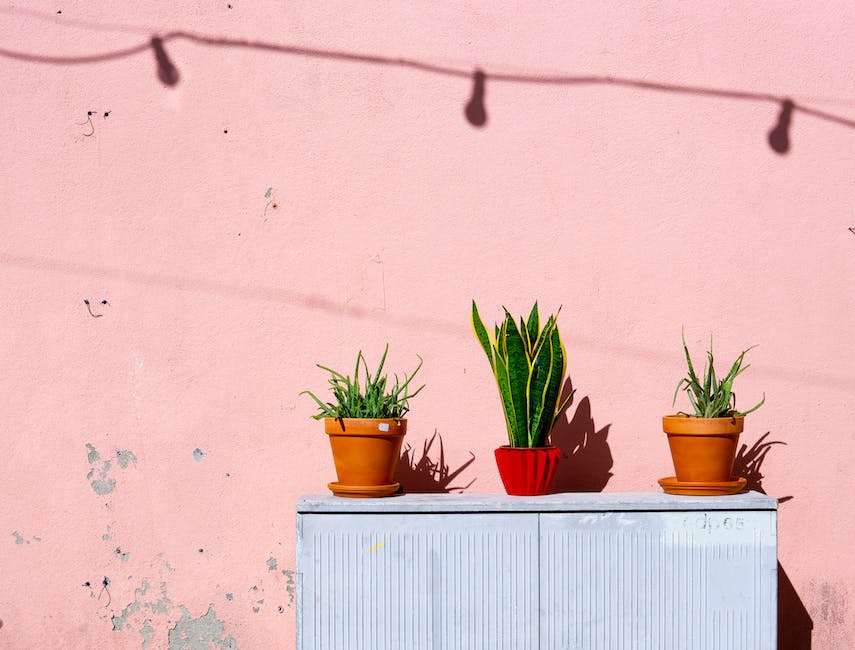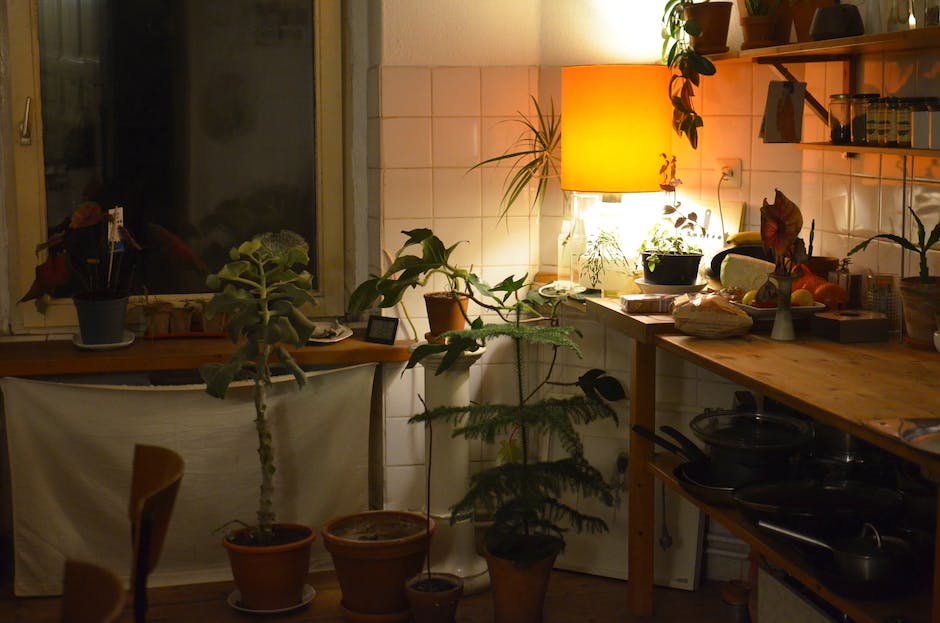Enriching our living spaces with the vibrant texture and effortless beauty of plant life not only provides aesthetic appeal, but also promotes a sense of calm and connection to nature. Among all the plants, exotic house plants hold a charm of their own, bursting with diversity in terms of visuals, origin, and characteristics.
Perfect for both novice and expert gardeners, these plants offer an engaging experience as we learn to cater to their unique needs and witness their atypical features flourish indoors. Whether it be about selecting the perfect exotic plant for your home or learning the nuanced details of their care, this exploration presents a detailed guide that will illuminate the path to an enriching and verdant indoor landscape.
Choosing the Right Exotic House Plants

Overview of Popular Exotic House Plants
One of the most popular exotic house plants is the Angel Wing Begonia. It thrives in the indoors and is unique for its vibrant and spotted leaves. This plant originally hails from South America, specifically from Brazil. The Begonia’s appeal lies not only in its visual appeal, but also in its ease of care. It requires modest levels of sunlight and is quite flexible with its watering schedule, making it suitable for a beginner.
Another popular choice is the Chinese Money Plant, known for its distinctive round leaves. It originates from southern China and is believed to bring good luck and prosperity, hence its name. This plant prefers indirect sunlight, requires watering only when the soil is completely dry, and enjoys a moderate level of humidity.
For those seeking a bit of a challenge, the Calathea, or the zebra plant, might be an attractive choice. This plant is native to the tropical regions of South America and is notorious for its fussy nature. It features beautifully patterned leaves that certainly earn it its exotic label. The Calathea needs indirect sunlight and prefers high humidity. It also requires a very consistent watering schedule, where the soil is kept moist but never too wet.
Care Requirements for Exotic Plants
When it comes to sunlight requirements, most exotic plants prefer indirect sunlight. Direct sunlight can often burn their leaves and cause damage. It is vital to read up on the specific sunlight needs of your chosen plant,as each species has its own optimal light conditions.
Regarding watering, most exotic house plants prefer their soil to dry out completely between waterings. Overwatering can lead to root rot and other diseases. Yet, there are plants, like the Calathea, that prefer consistently moist soil. Knowing the watering needs of your specific plant is key to its survival.
Humidity is another vital factor for exotic house plants. Many exotic plants originate from tropical regions, making them more accustomed to high humidity levels. Plants like the Calathea, for example, thrive in humid environments and may need more attention in maintaining the right moisture levels. If the air in your home is too dry, consider using a humidifier, or place your pot on a tray filled with pebbles and water.
Lastly, remember that each plant is unique, and general advice should be supplemented with species-specific research. Understanding your plant’s native environment can give you valuable insights into its care requirements. For example, a plant native to a rainy jungle would likely need more water and humidity than a plant from an arid desert region.
Choices for More Experienced Green Thumbs
For individuals with more experience in plant care and seeking some challenge, the Fiddle Leaf Fig and the Bird of Paradise could be tempting. These plants are visually striking but demand more attention. They require a careful balance of sunlight, watering, and feeding to flourish. The Fiddle Leaf Fig is particularly sensitive to its environment and responds dramatically to changes in sunlight and temperature. On the other hand, the Bird of Paradise, with its bold, fan-like leaves, is a sun-lover that needs a lot of light.
Getting care just right for these plants gives a mix of challenge and satisfaction for the more experienced green thumbs. Their stunning visual appearances also lend a unique, exotic touch to the indoor environment.
Wrapping Up
Choosing an ideal exotic house plant involves understanding the plant’s origin and care requirements, while concurrently ensuring it is compatible with your expertise and living situation. Whether it’s the low-maintenance Angel Wing Begonia or the more demanding Fiddle Leaf Fig, taking care of these unique greenery provides an enriching experience, transforming your home into a small oasis of exotic jungles and distant landscapes.
House Plant Essentials
Caring for Your Exotic House Plants

Detailed Guide on Exotic House Plants: Nourishment, Maintenance, and Pest Management
Keeping exotic house plants healthy and vibrant calls for a wide assortment of care techniques. With their captivating foliage and distinct qualities, these plants often ask for more attention compared to your usual house plants. Their nutrients, for example, rely heavily on the plant’s species. The elegant Orchid thrives with a specialty orchid food, while a Cacti prefers a low-nitrogen diet. Feeding should be performed during their growth seasons, typically high-light and warm periods. Be sure to strictly follow the recommended feeding instructions per plant to avoid over-nourishment.
Maintenance, especially pruning of old leaves or dead blooms, is a fundamental part of exotic plant care. This activity promotes fresh growth and helps the plant maintain its remarkable appearance. However, it’s vital to keep in mind that different plants have different grooming needs. Some exotics, such as air plants and ferns, require less grooming attention.
As an exotic plant owner, managing pests can pose a challenge. Bugs like spider mites, scale insects, and mealybugs are common predators. Choosing organic pesticides can be a safe route to safeguard both your plant and indoor environment. Routine leaf cleaning with soapy water can also serve as a deterrent against these miniature invaders.
Common Ailments and Troubleshooting Techniques for Exotic House Plants
Exotic house plants are not immune to ailments, regardless of their tenacious nature. Some common issues include yellowing leaves, which may point to overwatering; dry, brittle leaves, often signifying underwatering or low humidity; and small or discolored leaves, potentially alluding to nutrient deficiencies.
To troubleshoot these problems, first review your watering, feeding, and lighting routines. Regularly check the plant’s soil; if it’s either too wet or dry, adjust your watering schedule. Likewise, if your plant doesn’t get enough light, consider moving it to a brighter location or even introducing artificial plant light.
Managing Growth-Related Issues in Exotic House Plants
Even with suitable care, extraordinary plants have a tendency to outgrow their immediate environment. They might grow too vast for their existing pot, or their roots may begin to expand overly. When this occurs, repotting the plant becomes essential. To do this, select a pot slightly larger than the previous one, which is equipped with adequate drain holes, and fill it with a high-draining potting mix. Extra caution should be taken during this phase to prevent causing harm or shock to the plant.
There will be cases where transferring an overgrown plant to a new pot is not an option due to its size or type, as with big tree ferns. In such cases, you could prune it back. Try propagating the trimmed plant portions, as this can result in new, uncomplicated plants. Regular inspections of your plants can help detect potential problems early, ensuring that your exotic plants continue to flourish.

Creating a Perfect Environment for Exotic House Plants

Recognizing Light Requirements for Exotic House Plants
For indoor plants, proper lighting is a paramount requirement. A multitude of plants have varied levels of light requirements, from low to intense bursts. Exotic house plants are often found naturally in tropical or subtropical areas, usually growing in larger plants’ shade. As such, they usually fare well in the lower light conditions commonly found in most homes. Yet, a few varieties, such as cacti or succulents, thrive under brighter conditions. Hence, an appreciation for the specific light requirements of your plants is critical so you can adjust your care accordingly. Altering plant positions in the house to utilize natural light, or supplementing with grow lights when needed, might be beneficial.
Considering Temperature and Humidity
Temperature is another key factor affecting the well-being of your exotic house plants. Most exotic plants prefer a temperature range between 65°F and 85°F, which corresponds closely to most people’s indoor comfort zone. Dramatic temperature fluctuations can harm the plants, so try to keep them away from drafts, heating vents, or cold windowpanes.
Humidity plays an equally important role for these plants since they come from regions with high humidity levels. Unfortunately, the air in many houses, especially during winter, is quite dry. To combat this, you can mist your plants, use a humidity tray, group plants together to create a microclimate, or use a humidifier.
DIY Solutions for Ideal Plant Environment
For those with a knack for DIY projects, there are some creative solutions to ensure optimal conditions for your plants. Many enjoy using pebble trays: a shallow tray filled with water and lined with pebbles. The plant sits on the pebbles and as the water evaporates, it improves the humidity around the plant.
Another option is to create a mini indoor greenhouse using glass terrariums or aquariums. Not only can these structures trap moisture and heat, thus creating a tropical environment ideal for exotic houseplants, but they also act as unique and eye-catching displays.
Arranging Exotic Plants for Aesthetics and Functionality
In terms of placement, it’s not only important to consider the plant’s environmental needs but also how they fit into your overall décor scheme. Places that receive the right amount and intensity of light and have appropriate temperature and humidity conditions should be your first consideration.
Strategically grouping plants together improves humidity, gives an aesthetic appeal and allows easier care – you can cater to the similar needs of these plants all at once. Vertical shelving or tiered stands can also be used to make the most of available light, with those requiring less on the lower tiers.
Remember, the ultimate goal is to create a space where both you and your exotic houseplants thrive. With a little attention to detail, you can cultivate a beautiful and lush indoor jungle right in your home.

Tailoring our indoor environment to the needs of exotic plants can be a journey filled with valuable lessons about nature’s incredible adaptability. With appropriate care, these plants can fill our homes with life, color, and a soothing ambiance. This guide encourages every potential plant owner to embrace the rewarding challenge of caring for exotic house plants, transforming our interiors into lush indoor gardens. Remember, every leafy inhabitant of your indoor jungle is not just a decorative element – it is a living embodiment of nature’s resilience and splendor. May your journey with exotic houseplants be filled with growth, revelations, and above all, a deeper connection with nature.
